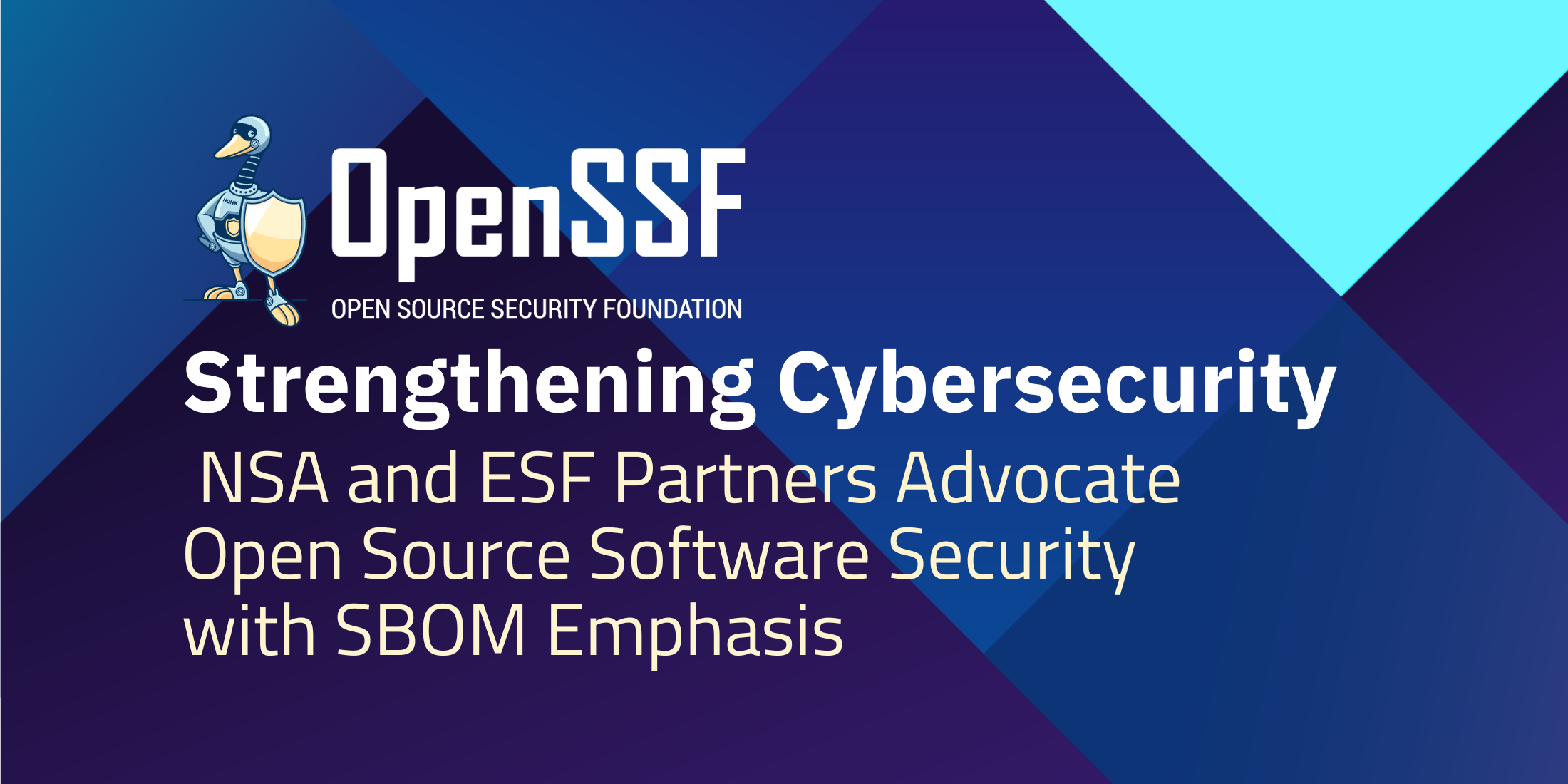
In a collective effort to fortify cybersecurity practices and safeguard the software supply chain, the US National Security Agency (NSA), in collaboration with the Office of the Director of National Intelligence (ODNI), the Cybersecurity and Infrastructure Security Agency (CISA), and industry partners, has released a comprehensive cybersecurity technical report (CTR). The Securing the Software Supply Chain: Recommended Practices for Managing Open Source Software and Software Bill of Materials Report represents a significant step forward in enhancing the security of open source software (OSS) and we are pleased that it references many OpenSSF technical initiatives to secure the OSS supply chain from Scorecard to S2C2F.
Background
Persistent vulnerabilities within the software supply chain remain a substantial threat. The release of this cybersecurity technical report follows the groundwork laid by the “Enhancing the Security of the Software Supply Chain through Secure Software Development Practices” paper, which was previously issued by the Office of Management and Budget (OMB). These concerted efforts underscore the gravity of cybersecurity challenges in today’s rapidly evolving digital landscape.
Report Significance: Elevating Software Security Standards
The significance of this report lies in its capacity to offer guidance that not only aids the development activities of individual developers but also extends support to large industry corporations. It is a collaborative effort crafted by the Enduring Security Framework (ESF) Software Supply Chain Working Group, a consortium led by the NSAODNI), andCISA. This public-private cross-sector group is dedicated to furnishing comprehensive details on recommended practices, serving as a foundational framework for delineating, evaluating, and gauging security measures throughout the software lifecycle.
In pursuit of the objective of proactively managing OSS risks as a part of evolving secure software development practices, this document suggests seven key areas for enhancement pertaining to software development and OSS. These areas are formulated to facilitate the advancement of an organization’s software development processes. It is essential to note that while numerous tools may be applicable, no particular tool is advocated over another. The seven identified areas encompass:
- – Criteria for Selecting Open Source Software
- – Risk Assessment
- – Licensing
- – Export Control
- – Maintenance
- – Vulnerability Response
- – Secure Software and SBOM Delivery
The report aligns with industry best practices and principles, emphasizing the critical role of SBOMs in maintaining software security. By providing detailed insights into OSS adoption, the report underscores the importance of considering composition, adoption processes, and the management of approved software components using SBOMs when integrating open source components into existing product development environments.
OpenSSF’s Effort in SBOM Delivery
As we navigate the ever-changing cybersecurity landscape, OpenSSF takes a leading role in advocating for a clear understanding, documentation, and implementation of Software Bill of Materials (SBOM) use cases within existing specifications. The OpenSSF recognizes the pivotal role of SBOMs in bolstering software security, evident in initiatives such as the OpenSSF Security Tooling Working Group spearheads the SBOM Everywhere initiative, standardizing SBOM naming and location. The SBOMit initiative focuses on attesting SBOMs, and the OpenSSF OpenVEX Special Interest Group is dedicated to transparently sharing vulnerability data through OpenVEX, an expedited Vulnerability Exploitability eXchange specification. Additionally, the OpenSSF Scorecard, which also checks for SBOM presence.
Collaborative efforts between government agencies, industry partners, and the OpenSSF aim to fortify the software supply chain against emerging threats. In an era of interconnected digital systems, these partnerships are pivotal for building resilience and upholding trust in the critical infrastructure that relies on secure software practices.